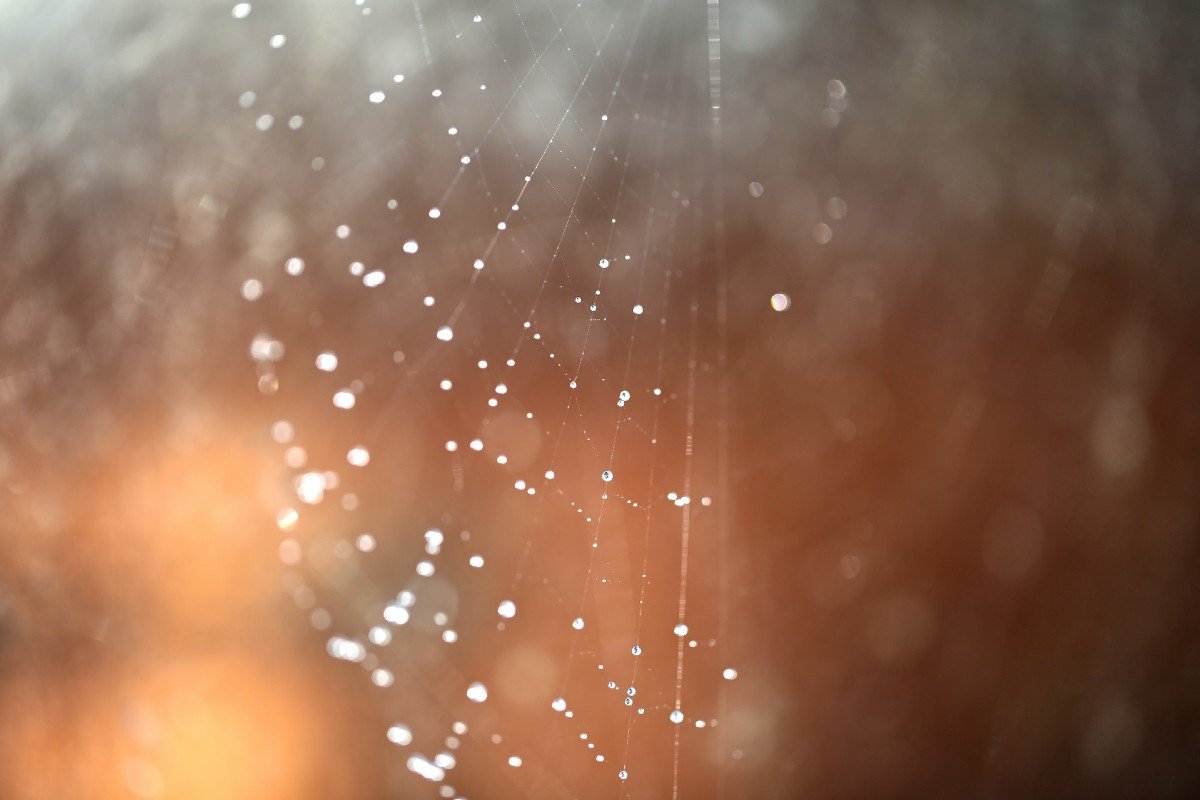Lines of Location – by Johanna Ellersdorfer
ISLAND | ONLINE ONLYJust beyond my balcony, the wispy threads of a spider’s web catch the last rays of afternoon sun. As the streetlights flicker on, I see the web stretched out between two flowering pear trees, startlingly visible amidst the small clusters of waxy green leaves, for just a moment.
About an hour later, the sky is inky and dotted with stars. The streets of this place, now called Canberra, curve in gentle arcs following slight undulations in the landscape. Trees line the footpaths, planted by type—gall oak, hawthorn, eucalypts—their network of roots pushing the concrete pavers out of place. I weave along the narrow footpaths, occasionally stumbling over the cracked pavers underfoot.
With each step I take, webs come in and out of focus. Light-jewelled threads like small nets in the night sky. Looking upwards towards an opening in a leafy hedge, I see a spider begin to build its web. It starts as a single line, like unspooled thread, taut and bright in the light of the street lamp. The spider glides back and forth between other lines I can barely see, and then starts to join them into an intricate mesh.
Compared to the spider, my hands are clumsy. I have tried to stitch the night sky in a series of loops and knots, copying patterns designed by a Scottish woman who, the century before last, moved around this country with her engineer husband. While he surveyed land, she looked to the sky, translating constellations into nets of stars.
Stitched in fine white cotton, my stars were too solid, the linked lines too there, so I gently unravelled hours of work into a single thread. It sat slack across my lap, kinked and curled where it had once been looped in knots.
Back home, before I go upstairs, I peek between the low-rise buildings of my apartment complex to where I know the web must be. All I see is the silhouette of the ornamental pear trees as they quiver in the cool evening air.
***
The surface of this city is a mesh of bitumen and concrete concealing a network of limestone fissures and caverns. Sometimes, water seeps through the holes, forming puddles on footpaths and, when it rains, occasionally flooding roads. In the 1960s, during construction of the Treasury Building, 180,000 litres of water were pumped out per hour so that the foundations could be set. This building, like many others, now stands atop a subterranean network of voids, and is anchored in place by a complex arrangement of piers.
In the rain, the footpath outside my apartment complex floods, forming puddles too deep to walk through. Sometimes, once the rain has stopped, one of my neighbours will fastidiously try and sweep these puddles away, pushing small streams of water into the gutter.
***
Spiders often creep into my apartment, slipping under doors and through gaps in the flyscreens. When it rains, I notice them more. Tufts of translucent web build up low to the ground, in the gaps between cabinets and furniture and walls. When I brush them away, the fine threads disappear, tickling slightly, as they pass through my fingers.
The spiders in my apartment are mostly small and relatively harmless—house spiders and daddy long legs, the occasional white tail as well. Mostly they sit still in the corners of the ceiling, but sometimes I find them on the floor, still, as though frozen mid-movement.
Whenever I can, I try to coax these lost spiders onto a piece of paper and take them outside. More often than not, they sense me approaching and scurry off, their slender black limbs disappearing into the grey pile of the carpet.
***
For centuries, spider silk was used for cross-hairs on optical devices like telescopes, microscopes and theodolites, the intersecting point of the single overlaid threads finer than a pin prick.
Theodolites mapped borders, helping humans draw lines through the landscape to separate here from there. They also helped humans carve lines through the landscape to separate now from then.
From above, this city is now a cluster of roundabouts linking arterial roads. It splays out like a web, dissolving at the outskirts, its current borders invisible except on a map.
***
In the early morning, the threads of the spider web hang limp between the balcony railings, the strands weighed down by drops of dew. The branches of the flowering pear are tall and spindly with only a smattering of leaves. I watch as the web glitters in the soft light.
For a brief time in the 17th century, in a part of Austria not so far from where my father grew up, devout Catholics would gather cobwebs like these in great bundles. Sticky hanks of thread would then be gently teased apart and stretched flat to create small translucent canvases, which would then be painted in colourful designs of haloed saints performing miracles. These artworks would be hung in windows, where the fine mesh of painted threads would appear to glow from within.
As the sun reaches higher in the sky, I notice that layers of web have accumulated in soft gossamer clumps on the balcony flyscreens. The soft veil of threads is peppered with dust and dead flies. Lower down, strands of silk twine around the legs of an old plastic chair and a fine mesh binds clusters of leaf litter.
These webs encasing my balcony in curtains of silk make this place look older than it is. It is almost beautiful. ▼
Image: Luca Volpe
If you liked this piece, please share it. And please consider donating or subscribing so that we can keep supporting writers and artists.

